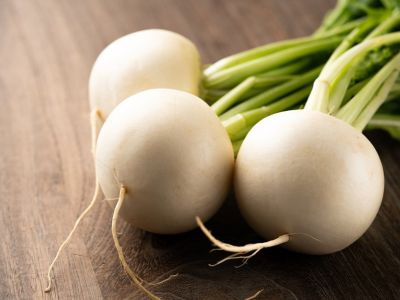A salad turnip is one grown not only for its root, but especially for the tasty leaves. Turnips are an introduced plant to North America. They originally hailed from eastern Asia and parts of Europe. They are in the Brassicaceae family, which includes broccoli and cabbage. Turnips were once used as little vegetable lanterns, prior to being replaced by pumpkins. Hakurei turnips are a little small to make into lanterns, but their sweet taste colored with classic brassica zing, makes them an excellent root vegetable to grow.
How to Grow Hakurei Turnips
Hakurei turnip seed can be sourced from online retailers or organic nurseries. As with most root crops, it is best to plant the seed directly outdoors into prepared soil. Soil should be loose, well draining, and moderately fertile. Plant in spring as soon as soil is workable and moderately warmed. Plant in August to early September for a fall crop. Seed in rows at least 14 inches (35.6 cm.) apart. Hot temperatures prevent formation of the root and cause bolting. If you wish to save Hakurei turnip seed, leave some plants in the ground until the second year when they will produce flowers and seed. The tiny seed should just be dusted with soil and kept moist.
Harvesting Hakurei Turnips
The leaves can be harvested at any point, but leave some on the plant to charge root formation. Fresh leaves last in refrigeration for 2 weeks in high humidity. For the sweetest roots, dig them up when they are only 2 inches (5 cm.) in diameter. Harvest the spring-planted roots prior to the arrival of hot weather, which can make roots hard and bitter. Mulch fall plants and harvest them as needed. They will survive light frost and develop a sweeter taste. Turnips can last several months in the refrigerator or a cool root cellar. Harvest all the roots before a hard freeze and store.
How to Use Salad Turnips
Turnips are packed with vitamins and nutrients. The greens of turnips can be added to a raw green salad or lightly sautéed. The leaves have a light mustard flavor and add zip to any dish. The flavor makes a delicious potherb in soups and stews. The roots are a bit spicy with earthy sweetness. Roots can be eaten sliced thin and raw in salad, but are typically cooked. They may be steamed, baked, or grilled whole. Sliced, they are excellent in stir fry. They can also be cut into cubes, par cooked and frozen for later use. Try making mashed potatoes with some turnips added.
